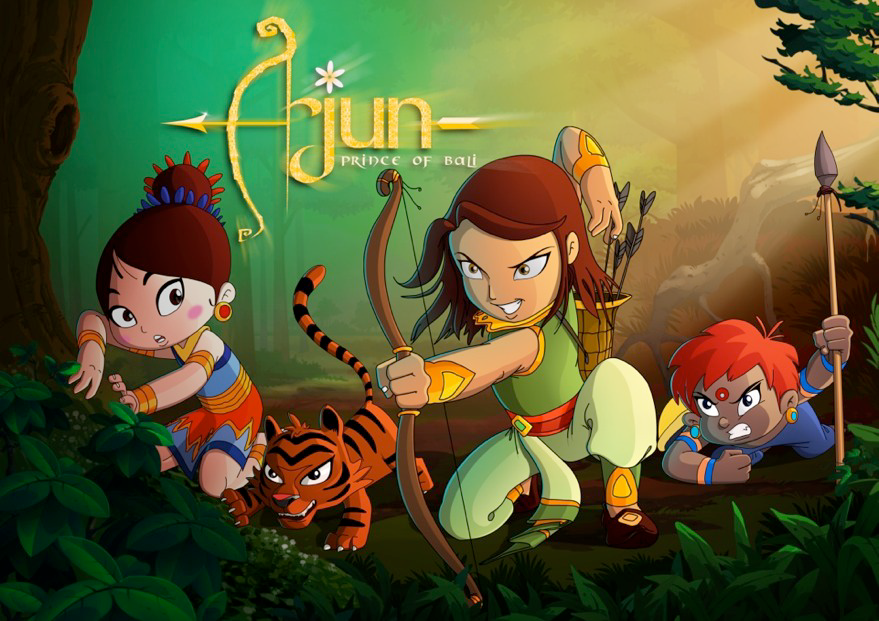The FICCI Frames 2015 is seeing a lot of focus being given to animation, VFX and the gaming sector. One such was the session on ‘Decoding Kids’ Content Consumption’ which tried to analyse the tastes of the kids in India and what do stakeholders look at while picking content for them. Moderated by FICCI AVGC Forum chairman Ashish Kulkarni, the panel included Eurodata TV Worldwide international senior sales manager Eric Lentulo, Viacom18 EVP and business head- kids cluster Nina Elavia Jaipuria, BARC CBO Romil Ramgarhia, IMRB International group business director Ashish Karnad and Stratagem Media CEO Sundip Nagpal.
The session started off with Eric giving a glimpse into what the kids in the European countries are primarily watching. According to his company’s data, kids in Asia were watching less amount of kids’ content as compared to US and Europe. While markets such as France and Germany saw children consuming more animation content, Sweden was an exception with children seeking ‘edutainment’ content the most with a little bit of animation.
Sundip took to the podium next and shed some light on the Indian market and bewildered the audience by stating that while most people think kids consume about 80 per cent of cartoon channels, the reality was that just 30 per cent of kids’ content was being consumed by kids (aged 4-9), 35 per cent of GEC content and 35 per cent of other content. For older kids, between 10 and 14, it was even lower with kids’ content at just 14 per cent.

While the industry goes by the notion that mothers watch cartoons along with their kids, Sundip clarified that TAM data showed a mere 6 per cent of mothers watch the channel in reality. In younger kids, the boys consume a lot of cartoons while the older boys as well as both younger and older girls watch a lot of GEC content. While one would expect kids in the metros to gulp down more of cartoons, the consumption time is almost equal in the rural areas as well. In terms of Indian to foreign content, viewers of Disney Channel and Pogo were the ones who consumed more Indian content than foreign.
Ashish Karnad brought out a 2013 study conducted by IMRB for the kids’ space that revealed – kids want entertainment to reduce tension from studies and playing games overhaul TV viewing to being their top stress buster. He also showed that younger girls and boys liked comedy and action respectively while the older girls and boys were more tuned to romance and horror respectively.
Hindi was the dominant language with nearly three in four children stating that they would prefer to watch the cartoon shows in Hindi or Hinglish. They also loved characters that were shown as ‘helping others’. He concluded by stating that kids of today resemble adults when it comes to taking stress.
The session then went to the power lady in the kids broadcasting space – Nina – who said that despite the numerous data that keep coming out, according to her, kids still love television because in a lot of homes kids don’t have access to gadgets. “They want to escape this competitive world and animation can take them to a fantasy land that live action can’t,” she said while elaborating that the most important part was to build a trust and bond with characters. This could be done by tangibalising the relation beyond TV through merchandising.

She pointed out that the challenge for Indian animation is storytelling and scriptwriting, which is severely lacking. “Scriptwriting in animation is not easy and I would love to have people to write for us,” she exclaimed. The main factors that needed to be filled in by the kids broadcasters while addressing the need gap for kids’ content was the fun factor, action, values, character appearance and cleverness.
Ashish Kulkarni asked Nina why the broadcasters lacked Indian animation and had more of foreign content to which Nina responded, “Kids don’t watch content in terms of it being from a particular country or a particular type. The content is also dubbed in various languages. The reason why Indian content is lacking is because production of local content started very late. But we have moved way ahead from when it was 100 per cent imported content to being 30-40 per cent Indian in nature today.”
Addressing another question from Ashish Kulkarni on the lack of enough girls’ content, Nina said that in order to make the channel work, she needs to go by the market demand which is currently 60 per cent boys viewership and remaining girls. “The opportunity is there for micro-segmenting for another channel. If carriage fees go down and ad revenues prosper, we may have a channel dedicated for girls in the future,” she signed off.
